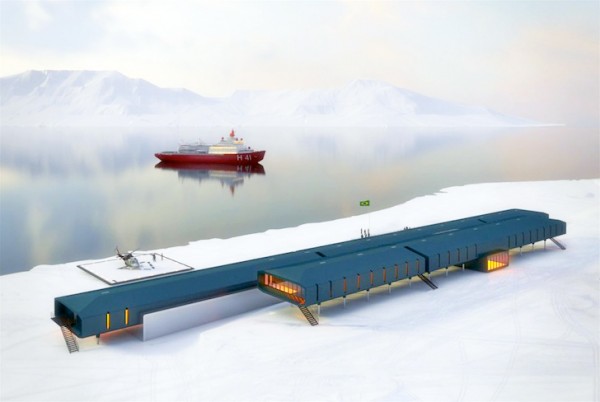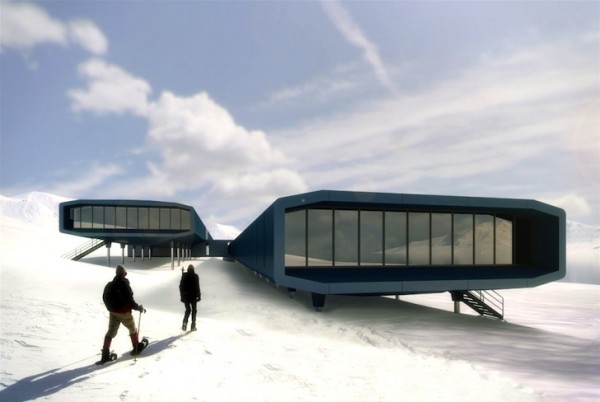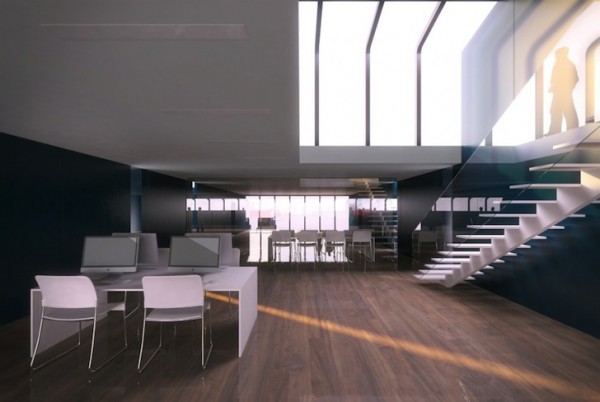Grab your parkas, everyone. It’s already late May and winter is almost here. Well, it is if you’re in the Southern Hemisphere, anyway. And no place feels winter more deeply than the Antarctic, where a new research station is being planned that will run on renewable energy, even during the unfathomable cold and dark of austral winters.
The Comandante Ferraz Antarctic Station, designed by the Brazilian firm Estúdio 41, recently won an international design competition to create a sustainable year-round facility that can provide a comfortable habitat for team of scientists in one of the harshest climates on the planet. The proposed location on South Georgia Island, just off the north tip of Antarctica’s Palmer Peninsula, endures average winter temperatures of −70 degrees F.

Brazil may be known for its steamy rainforests, but the architects at Estúdio41 prove that they also know a thing or two about resilient design and enduring cold weather. To prevent loss of heat for the crew, the super-insulated units at the Ferraz station use radiation plates and a heat recovery system that makes the building 45 percent more efficient than a comparably sized structure. The station will also use a water conservation system that treats and reuses greywater.

The estimated 300 kW of energy needed to run the facility will be provided mostly by solar and wind energy. During the extra-long daylight hours in the Antarctic summer, photovoltaic panels will provide most of the energy. Then, when the station is plunged into nearly constant darkness in the winter, wind turbines will take over the energy generating needs. The station will also have an ethanol-based generator for use in emergencies and during peak energy periods.

The modules will be divided into eating and living spaces on the top half and research labs down below. To keep the isolated crew occupied during downtime, the units will include libraries and other common entertainment areas where residents can relax and unwind.
The new 34,000-square-foot Ferraz station, which will replace an older one damaged by fire last year, will be made largely of steel and will be supported by columns. These steel columns will help reduce the direct impact of the station on the natural landscape, and are also adjustable so that the station can be raised or lowered depending on the buildup of snow and ice. The prefabricated units are also easy to assemble and dissemble in case the station needs to be moved.